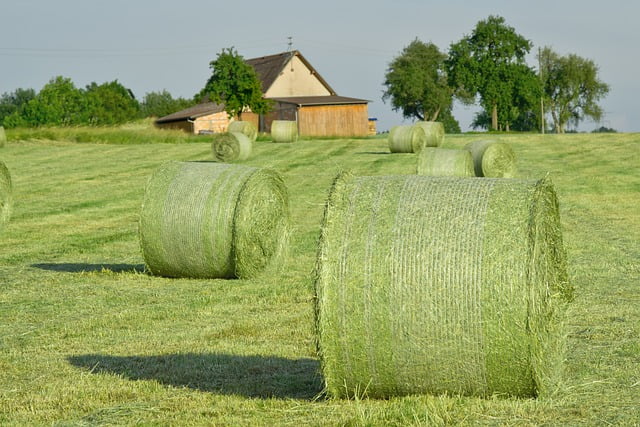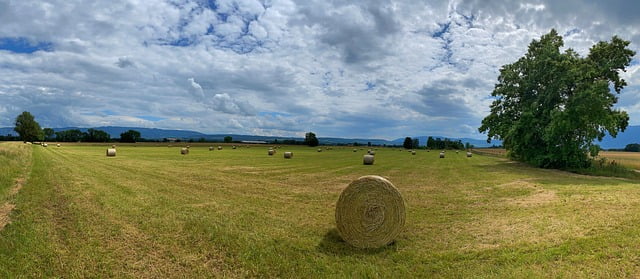It’s hay season, everyone! While not everyone feeds hay in winter, many of us do, and this is the time of year that we start purchasing and storing hay. Some of our directors would like to share their hay feeding practices.
Elizabeth Hernandez, West Virginia
We feed mixed grass hay in square bales from a local farmer. We have repurposed metal hampers that we use for feeders while they are in the barn. We have a large hay feeder (I’m at baseball, it has the bottom ‘tray’ and has metal panels in a ‘V’ shape. I don’t know what it’s actually called) for our barn lot that we restock as needed.
Ryan Ridgeley, Michigan
We are feeding strictly grass this year hopefully all the way through winter. We already have a drought again, but we’re leaning on the preparations we’ve made to make it through on grass. We will have hay for emergencies if the snow gets too deep or if the drought is so severe that the grass doesn’t survive.
Crystal Criswell, Ohio
I feed mixed grass hay in round bales that I buy from a local farmer, usually from his 2nd cut. I found a used Sydell collapsible bale feeder and it is my favorite, but I also have two of the Premier1 big bale feeder panel sets (also secondhand). I put a pallet down on the ground and set the bale on its end on top of the pallet. Then I set up the feeder panels around the bale. I move the location a bit after each bale to prevent over-compaction. I also have a few square bales ready for feeding the ewes in the lambing jugs for 24 hours after lambing.
Tamara Lambdin-Abney, Kentucky
We cut our own hay; a mixed grass with red clover. We square bale and store in a barn and hay shed on wooden pallets, We feed hay and lamb grower in winter months and in jugs for ewes with their lambs for a couple of days. We also feed hay in the spring on new grass to help with any scours. We generally put it on the ground next to any feed/ minerals. (It’s a bit wasteful but good to either leave for them to lay down on or add to the garden.)
Lori Marion, Oregon
We had more rain at just the right times this year, for much better grazing right into the coming winter we hope. When we have to feed hay in winter, we have feeders built with Premier 1’s plans. The rams have repurposed halves of water pressure tanks to keep it off the ground. My favorite (and the sheep’s) is grass with about 20% alfalfa, but we have fed straight grass hay and some grain hays with that. Rye is their least favorite- it’s like kids eating oatmeal- they’ll eat it if they are really hungry, but they’ll never overeat!


